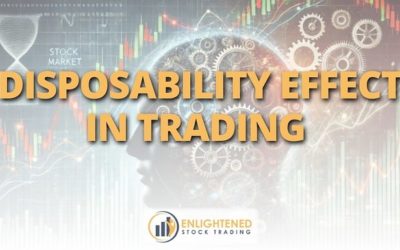The Disposability Effect is a cognitive bias where people undervalue things they already own, leading them to discard useful resources prematurely. Imagine buying a high-quality kitchen appliance, only to throw it away after a few minor issues instead of repairing it. This mindset isn’t just wasteful; it reflects a deeper illusion in trading psychology that can be financially devastating when...
Adrian Reid

Commitment and Consistency Bias in Trading: How to Stay Objective
As humans, we love to stay consistent with our past decisions even when they’re wrong. This is known as Commitment and Consistency Bias, a cognitive shortcut where we subconsciously justify and stick with previous choices to avoid the discomfort of admitting mistakes—one of many patterns explored in trading psychology. For example, imagine you bought an expensive gym membership at the start of...
How the Decoy Effect in Trading Skews Your Risk & Reward Perception
The Decoy Effect is a well-documented psychological bias that subtly manipulates decision-making by introducing a target option that makes one of the other choices appear significantly more attractive. This subtle manipulation was first introduced in a 1982 study as the “Asymmetric Dominance Effect” and is now widely used in consumer choice strategies, pricing models, trading psychology, and...
How to Overcome the Contrast Effect in Trading & Make Smarter Choices
The contrast effect is a cognitive bias where our perception of something is influenced by what came before it. Humans are particularly susceptible to this bias, especially when it comes to how we perceive stock prices and value. You would think a bottle of wine that costs $300 is cheap after looking at a list full of $1000 bottles, right? Now think of how this impacts institutional investors...
Stop Gambling! House Money Effect in Trading & How to Avoid It
The House Money Effect is a psychological bias where people treat money they’ve recently won (or earned easily) as less valuable than their original capital. This leads to riskier decisions like a gambler taking bigger bets after a hot streak. This cognitive bias, borrowed from casino psychology, transforms how traders perceive and handle risk after periods of success—a pattern well recognized...
How to Use Chaikin Money Flow for Smarter Systematic Trading
The Chaikin Money Flow (CMF) is a volume-based trading indicator developed by Marc Chaikin. It measures the volume of money flow into or out of a security over a given trading period, typically 21 trading days. The core principle behind CMF is that when closing prices are near the high on increasing trading volume, it indicates strong accumulation or distribution. Conversely, when closing prices...
Woodie’s Pivot Points: A Proven Tool for Market Timing
The Woodie’s Pivot Points trading indicator is a set of calculated pivot point levels used by traders to identify potential support and resistance areas in the market. These types of pivot points help traders predict possible price reversals and breakouts by establishing key levels based on past price data. Unlike traditional pivot point calculation methods, which distribute weight evenly among...
The Truth About Hyperbolic Discounting in Trading & How to Overcome It
Hyperbolic discounting is one of the most powerful yet least understood psychological forces in trading. This cognitive bias leads investors to choose smaller, immediate gains over larger future rewards, fundamentally altering how they approach position management and long-term strategy—a classic challenge highlighted in trading psychology. It's a pattern that repeatedly undermines thoughtful...
Stock Market Update|Tariff Trauma, Unexpected Strength and Important Trading Lessons.
Have you ever refused to sell a stock at a loss because you “knew” it would recover? Or hesitated to buy because the price seemed too high compared to a past level? That’s anchoring bias, and it’s one of the most dangerous traps in trading. It tricks you into making decisions based on outdated price points rather than real-time market data. The best traders don’t anchor to the past—they adapt to...
Kelly Criterion: The Smartest Way to Manage Risk & Maximize Profits
The Kelly Strategy, developed by John Kelly at Bell Laboratories, provides an optimal strategy for capital allocation in investment and gambling. It aims to maximize the logarithm of wealth over time, ensuring optimal growth rate while managing downside risk. The Kelly Criterion finds applications in investment management, portfolio optimization methods, and sports betting bankroll...
How to Profit from the Downside Tasuki Gap Candlestick Pattern
The Downside Tasuki Gap candlestick pattern is a bearish continuation pattern that suggests an existing bearish trend is likely to persist after a brief pause. Unlike reversal patterns that indicate trend exhaustion, the Downside Tasuki Gap signals that sellers remain in control, even as the price briefly pulls back. This pattern consists of three candlesticks and appears when the second candle...
Upside Tasuki Gap Candlestick Pattern: How to Confirm & Trade It Successfully
The Upside Tasuki Gap candlestick pattern is a bullish candlestick continuation pattern that suggests an existing bullish trend is likely to continue after a brief pause. Unlike reversal patterns that indicate trend exhaustion, the Upside Tasuki Gap signals that buyers remain in control, even as the price briefly pulls back. This candlestick formation consists of three candlesticks and appears...












